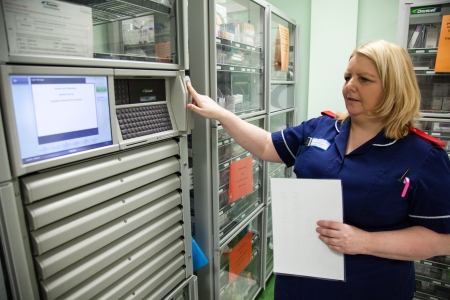A well-designed automated medication dispensing system can significantly reduce the workload of a pharmacist tasked with dispensing medication to patients. This system has a minimum and maximum level presets, and the pharmacist is free to focus on patient care activities. As a result, an automated medication dispensing system meets the requirements for an effective medication distribution system.
Save hospitals a significant amount of time by eliminating manual end-of-shift narcotic counts
Currently, there are few multicenter studies assessing the effectiveness of automated medication dispensing systems in improving healthcare safety. However, studies that have been conducted in hospitals demonstrate that these systems can improve patient safety and quality. Automated medication dispensing systems have the potential to save hospitals a significant amount of time by eliminating manual end-of-shift narcotic counts.
In addition to implementing an automated system by the physician dispensing companies that can improve patient care, innovative interventions have been proposed to transition from paper-based order entry to computerized prescribing. Computerized provider/physician order entry (CPOE) systems eliminate poor handwriting and inaccurate transcription and ensure that orders are legible, standardized, and standardized. These systems often come with built-in clinical decision support.
Provide secure storage for medications on patient care units
An automatic medication dispensing system provides secure storage for medications on patient care units. The systems contain mini-drawers stocked with a specific patient's medications, and these cabinets are secured so that only authorized personnel can open them. Moreover, these devices allow the dispensing of restricted drugs. Furthermore, pharmacists receive notifications when a medication is removed from an automated medication dispenser, and they can monitor the use of drugs.
Automatic medication dispensing systems can automatically package pills into their proper dosages. This way, patients can get the appropriate medication dispensed. These systems use near-infrared image analysis and intelligent algorithms to ensure accurate reading of the medication. They can scan thousands of barcodes before identifying errors. Furthermore, they can verify where the medicine is stored so that they do not get accidentally mixed up with other medications.
The effectiveness of an automated medication dispensing system is dependent on its implementation. Automated medication dispensing systems have mini-drawers that open only when a specific medication is selected, minimizing access to these medications to a specific person.
Pharmacists should consider using technology to improve patient safety.
Prevent medication errors by requiring staff to enter a patient's identification number before dispensing the medication
Besides improving patient safety, automated medication dispensing systems also reduce the risk of drug errors. They prevent medication errors by requiring staff to enter a patient's identification number before dispensing the medication. Some automated medication dispensing systems can interface with hospital computer systems and integrate patient medication data, and some can also issue alerts in the event of adverse drug events. The most recent research indicates that these systems are essential for improving patient safety.
Reduce the risks of drug errors by tracking prescription drug usage and setting up clinical indicators during the removal of specific drugs
A DC system can reduce the risks of drug errors by tracking prescription drug usage and setting up clinical indicators during the removal of specific drugs. One study involving an automated medication dispensing system found that aprotinin – a medication with restrictions on its use – was associated with a significantly decreased rate of errors when used with an ADC. The study also showed that barcodes in automated medication dispensing systems could help reduce the risk of incorrect dispensing.
Despite the costs, automated medication dispensing systems can be valuable for improving patient safety. Several benefits of an ADC are documented by a study of hospitals that used them. In addition to increasing the productivity of nurses, automated medication dispensing systems also improved pharmaceutical stock management. By reducing the time nurses spend dispensing medications, nurses could focus on patient care activities.
Many hospitals use ADCs to increase their overall patient safety. In hospitals, automated systems are widely installed and increasingly interoperable with other devices and systems. As the technology improves and hospitals implement new technologies, automated medication dispensing systems must also evolve. By incorporating advanced technology and proactive monitoring, the automated systems can help improve patient safety and keep organizations compliant with the state's regulations.
























